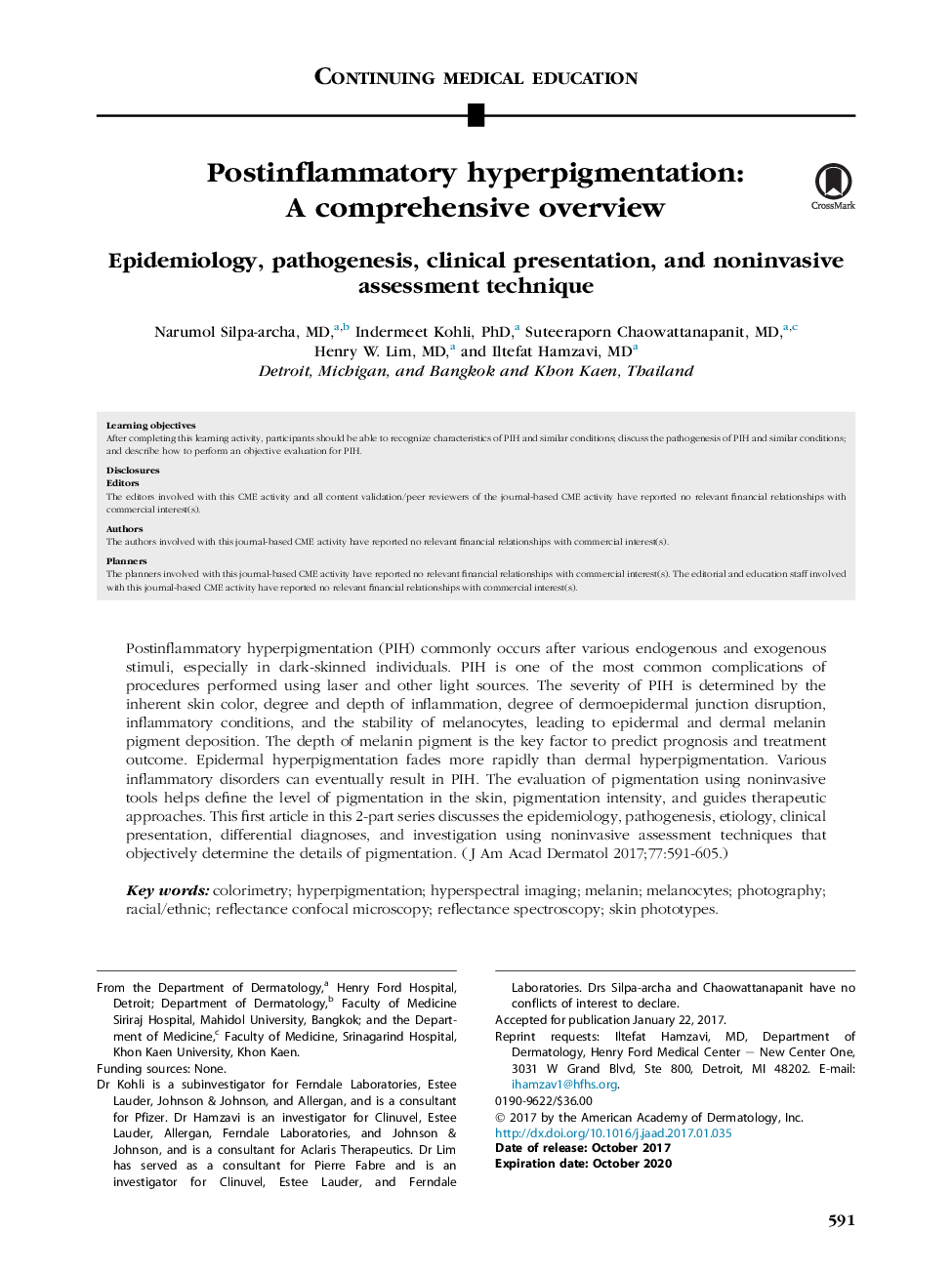| Article ID | Journal | Published Year | Pages | File Type |
|---|---|---|---|---|
| 5648046 | Journal of the American Academy of Dermatology | 2017 | 15 Pages |
Abstract
Postinflammatory hyperpigmentation (PIH) commonly occurs after various endogenous and exogenous stimuli, especially in dark-skinned individuals. PIH is one of the most common complications of procedures performed using laser and other light sources. The severity of PIH is determined by the inherent skin color, degree and depth of inflammation, degree of dermoepidermal junction disruption, inflammatory conditions, and the stability of melanocytes, leading to epidermal and dermal melanin pigment deposition. The depth of melanin pigment is the key factor to predict prognosis and treatment outcome. Epidermal hyperpigmentation fades more rapidly than dermal hyperpigmentation. Various inflammatory disorders can eventually result in PIH. The evaluation of pigmentation using noninvasive tools helps define the level of pigmentation in the skin, pigmentation intensity, and guides therapeutic approaches. This first article in this 2-part series discusses the epidemiology, pathogenesis, etiology, clinical presentation, differential diagnoses, and investigation using noninvasive assessment techniques that objectively determine the details of pigmentation.
Keywords
Related Topics
Health Sciences
Medicine and Dentistry
Dermatology
Authors
Narumol MD, Indermeet PhD, Suteeraporn MD, Henry W. MD, Iltefat MD,
